SAN DIEGO SHERIFFS DEFLECT COMPLAINTS AFTER ALLEGED WHITE POWER GANG MEMBER STABS BLACK TEENAGER
by JOE ORELLANA
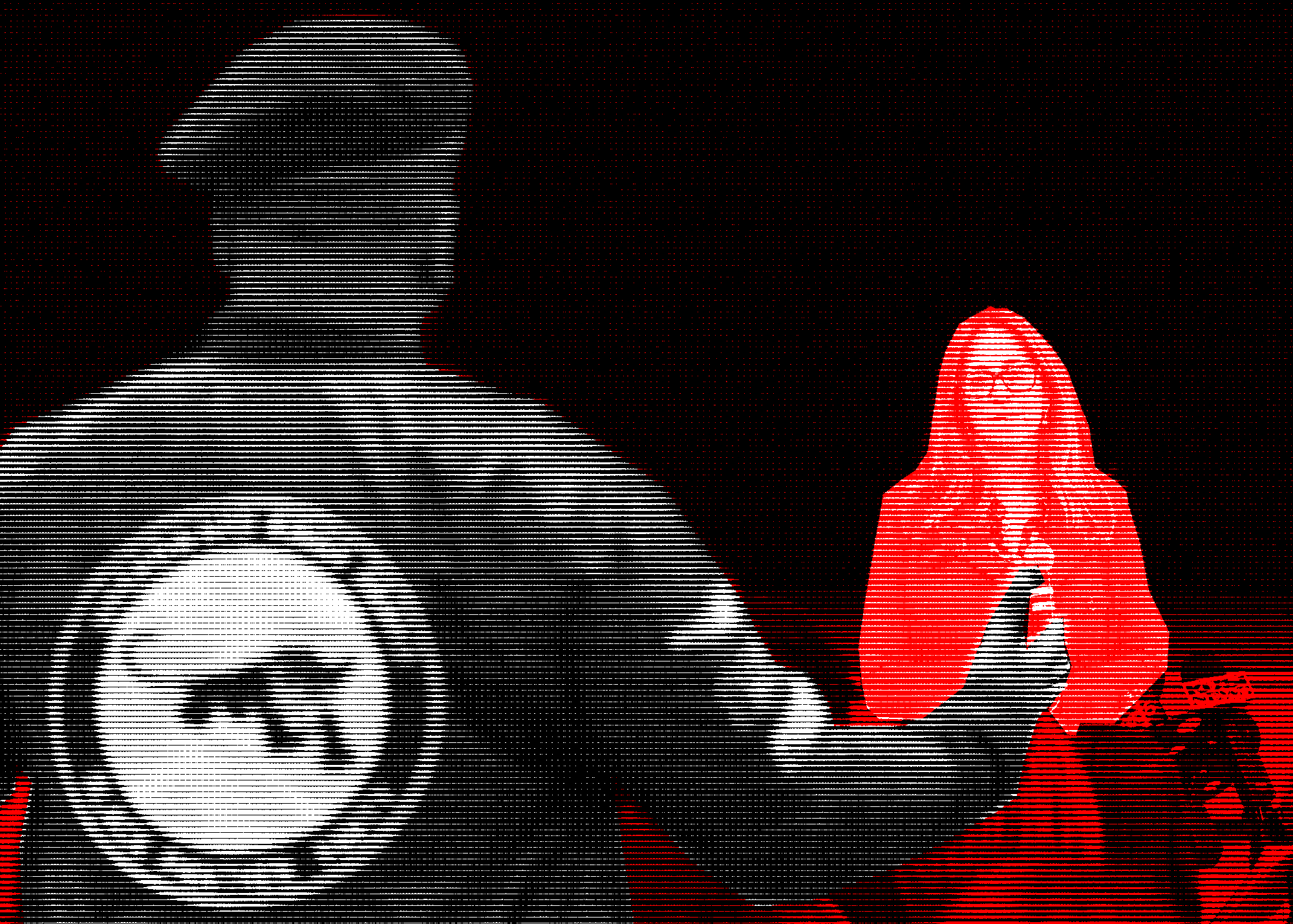
On April 16th, Lakeside experienced its first recorded hate crime of the year. Two white youths stabbed and beat a sixteen-year-old black girl while using racial and misogynistic slurs against the victim. A lieutenant with the San Diego Sheriff’s Department Lakeside Substation fielded the majority of questions and comments during a town hall on the attack. Attendees shared personal experiences with racism in Lakeside and condemned the Sheriff’s Department for what they characterized as inaction.
A VICIOUS HATE CRIME
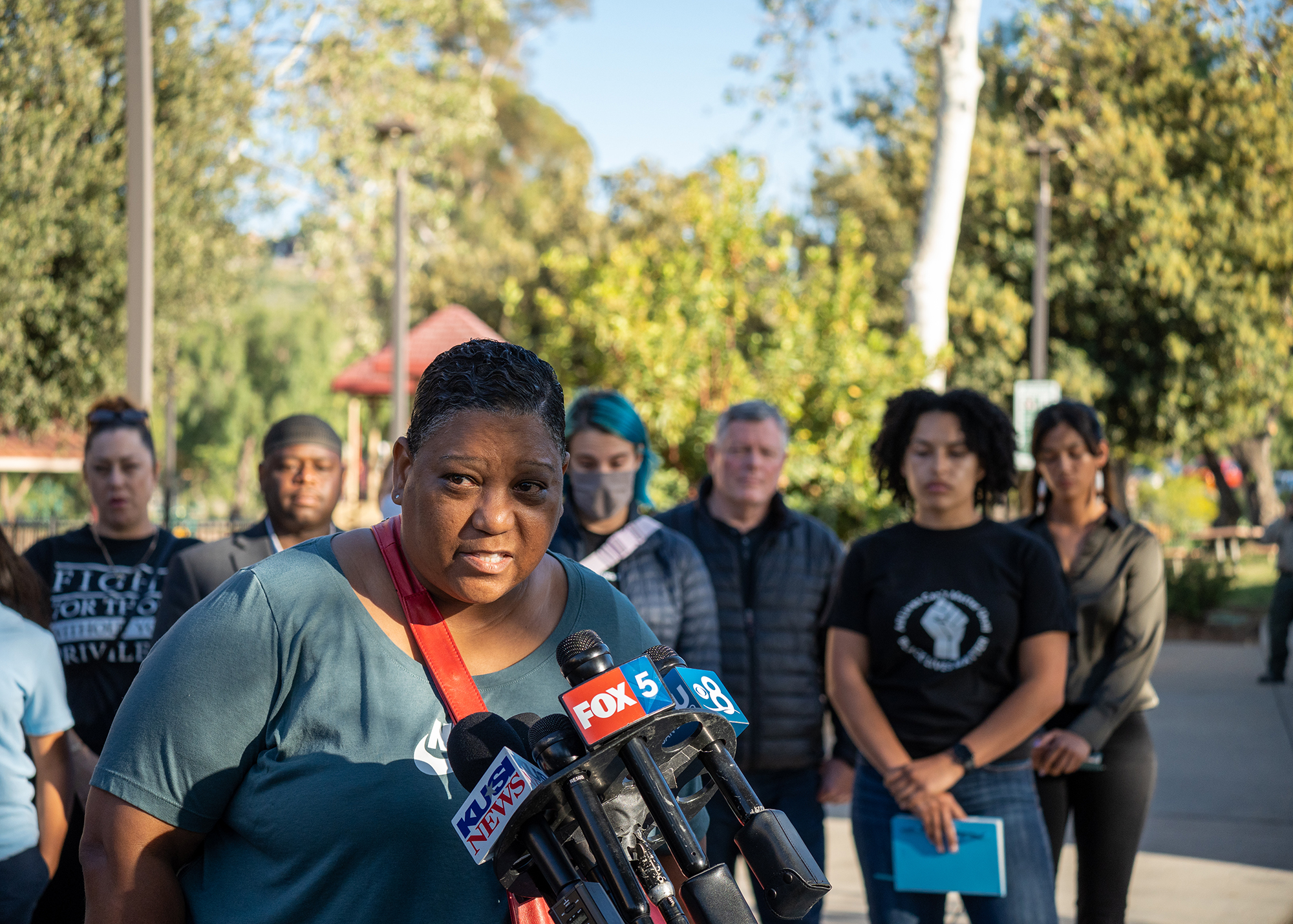
On the 16th, two juveniles accompanied by three adults walked to the residence of a sixteen-year-old black girl. One of the adults is the father of the sixteen-year-old male. The Sheriff’s Department claims that the teenage assailants approached the victim about an altercation that happened earlier in the day. Tasha Williamson, a well-known San Diego-area racial justice activist acting as a spokesperson for the family, said that the victim was not involved in the altercation. The sixteen-year-old black girl was beaten with a metal rod and stabbed by the two white juveniles. While the assailants stabbed and beat the victim, they and the accompanying adults shouted racist and misogynistic slurs. One assailant called the victim a “[n-word] bitch” while stabbing her. The victim’s mother claims she had to get between the victim and the assailants and was hit with a metal rod in the process.
The San Diego Union Tribune and 10News are reporting that an earlier assault preceded this attack, implicitly framing the hate crime as retaliatory. The Sheriff’s investigation “determined the 16-year-old male suspect and a group of teenagers approached the victim and her family about an assault that happened earlier in the day and began yelling racial slurs at them.” Williamson told LCRW that the relationship between the victim and the perpetrator goes back much further. The two families have lived in the same apartment complex for some time. The family of the victim had made complaints of racist harassment to the property management firm in charge of their complex several times over the past four years.
The victim’s wounds required hospitalization. A graphic image shared on social media shows two large stab wounds packed with gauze on the victim’s back.
A young woman was arrested on suspicion of brandishing a deadly weapon–in this case, the metal rod. She was later released to the custody of her guardian, despite the victim’s mother’s claims that she had been hit with that rod. A young man was arrested two days after the attack and charged with a hate crime and attempted murder. The adults who allegedly escorted the juveniles to the residence were not arrested. The teenage assailant is allegedly associated with the Lakeside Gangsters, a gang identified as a “White Racially Motivated Violent Extremist Group” by the San Diego Law Enforcement Coordination Center. A 2021 training document produced by the Sheriff’s detention training unit identifies the Lakeside Gangsters as a White Gang with 250 or more members. As an aside, the document also lists the Black Panther Party as an African American Gang.
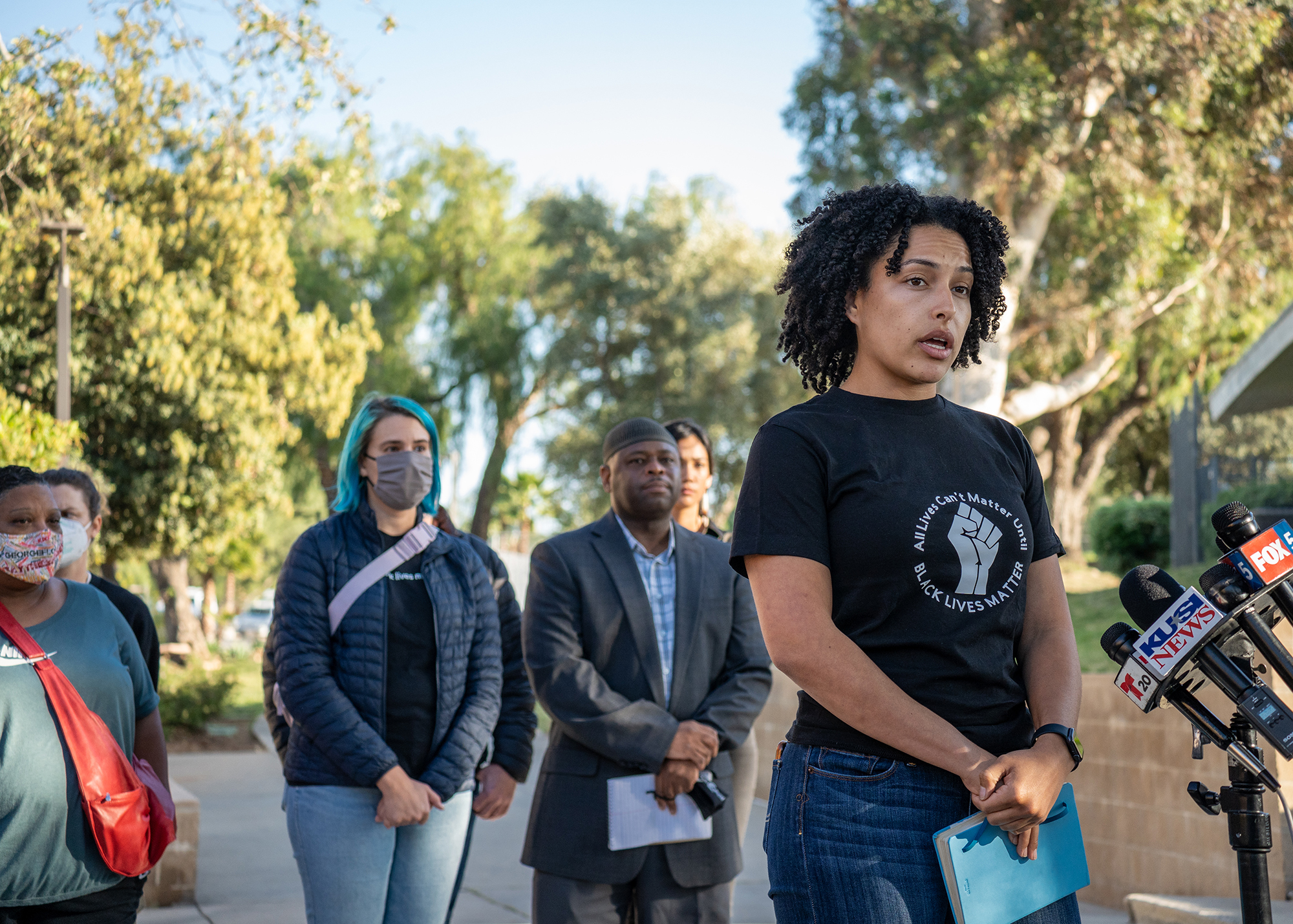
Describing the assault, Danielle Wilkerson of East County BIPOC Coalition noted that the assailants tried to attack the victim “when they weren’t ready . . . and if it had not occured in their apartment complex, I think history would’ve repeated itself in a much worse way.”
“The mom literally had to stop another person from beating her daughter with a pole while she’s actively being stabbed. What if they’d caught this individual while she was alone?” asked Wilkerson.
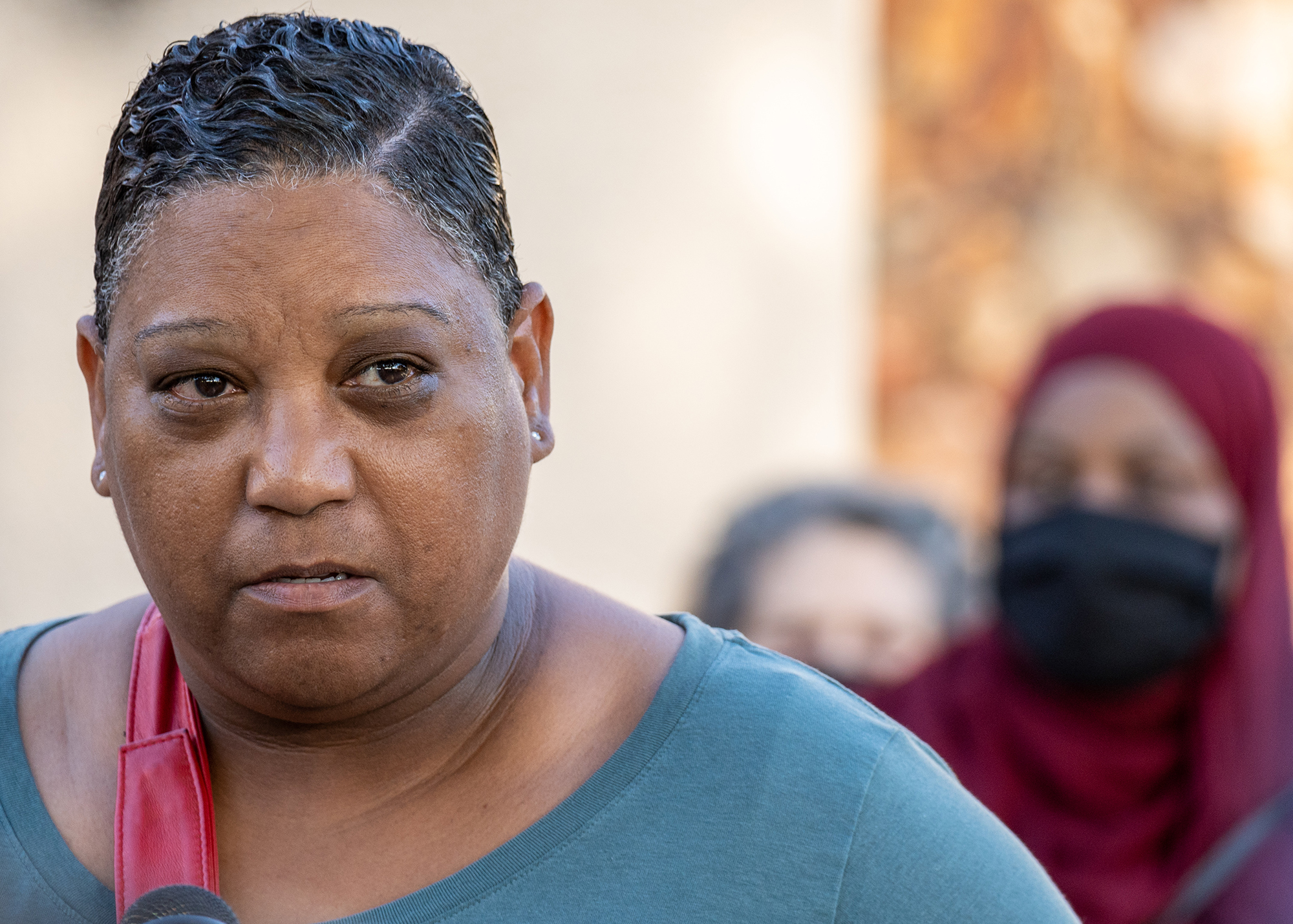
At the time of the press conference, the victim was going back to the hospital. Williamson claimed the hospital was not giving the victim proper care. While addressing the press, Williamson said that “a collapsed lung, to my knowledge, warrants more than a thirty-four hour stay.” The victim’s mother, who is not a nurse, has been “left to clean her wounds, check on her, monitor her breathing . . . this is not something I think would necessarily happen if she was not a dark-skinned black girl.”
START CONTENT WARNING
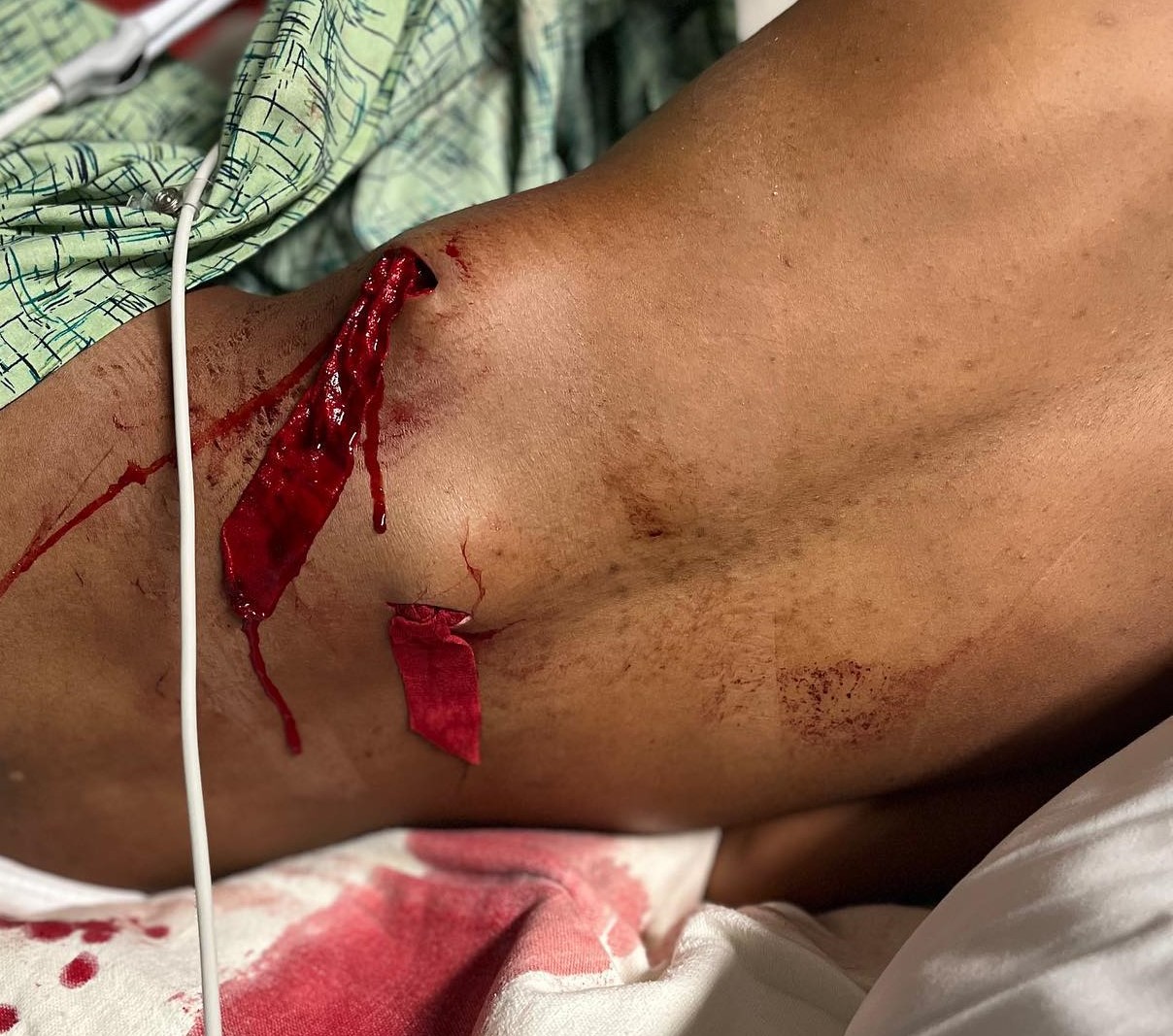
END CONTENT WARNING
Wilkerson added that “the mother is dealing with all of this while trying to answer calls from a million different departments, a million different people . . . while she’s going through this racialized trauma, she’s also expected to be an at home nurse, and expected to keep a roof over their head, and buy groceries, and get from A to B.”
“They also did not stitch up her open stab wounds,” Wilkerson said.
The community is actively raising funds to help the family get through this difficult time.
THE TOWN HALL
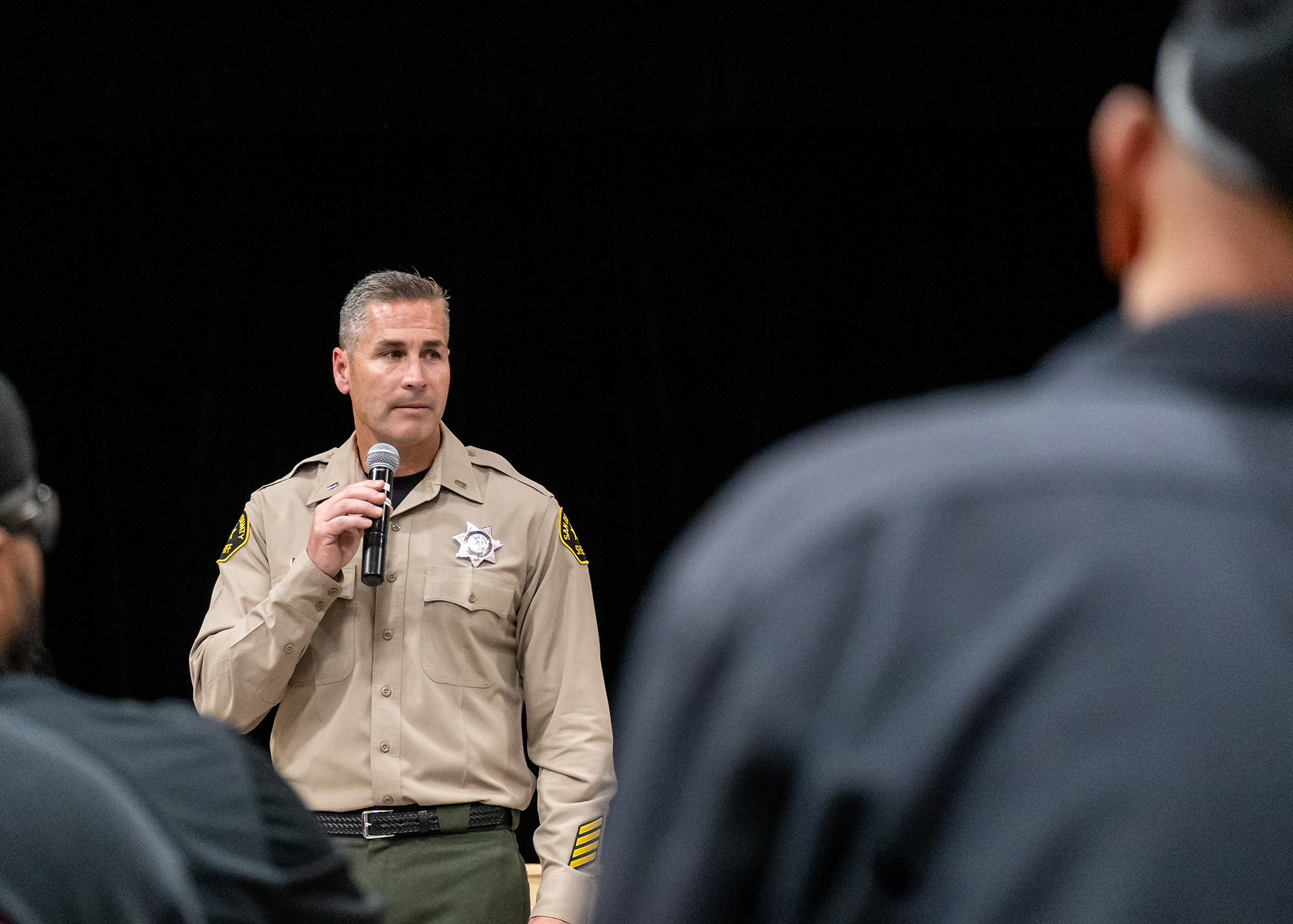
“I am a product of East County, born and raised here, went to high school here, grew up myself with public assistance in low-income housing,” said Lt. Shawn Wray as he introduced himself to the gymnasium full of attendees and media.
“I’ve been here at the Sheriff’s Department, the Lakeside Lieutenant, just now for about three weeks. Although I’m new to this position, I worked Lakeside and East County for many years,” he said.
With that, the town hall started.
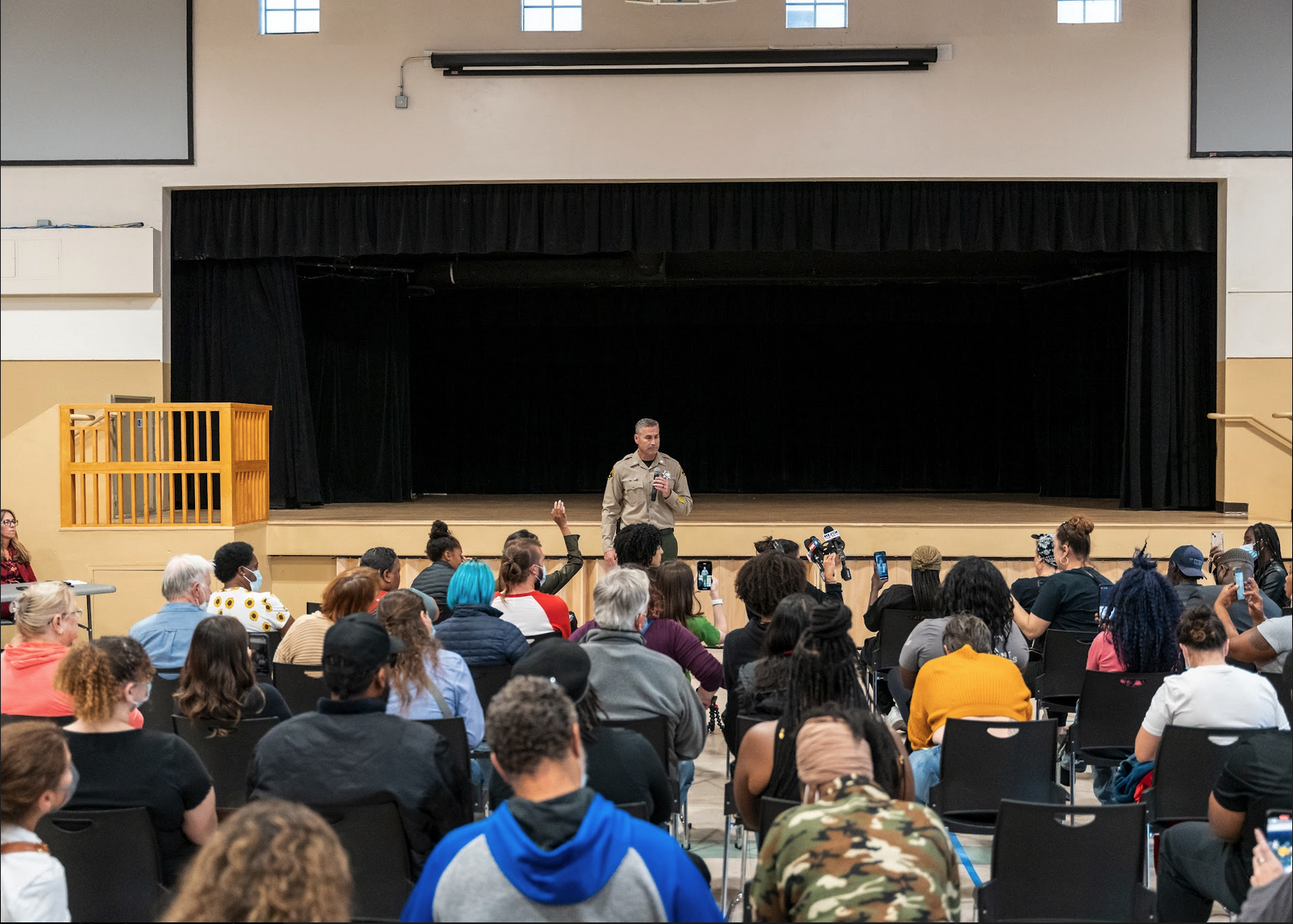
One attendee, a therapist who works with children in East County, said that police and schools do not respond appropriately when she reports incidents of hate speech and hate crimes.
“A lot of families here don’t come forward with these issues because they fear the Sheriff’s Department too. They feel the community might come back and retaliate,” another attendee said.
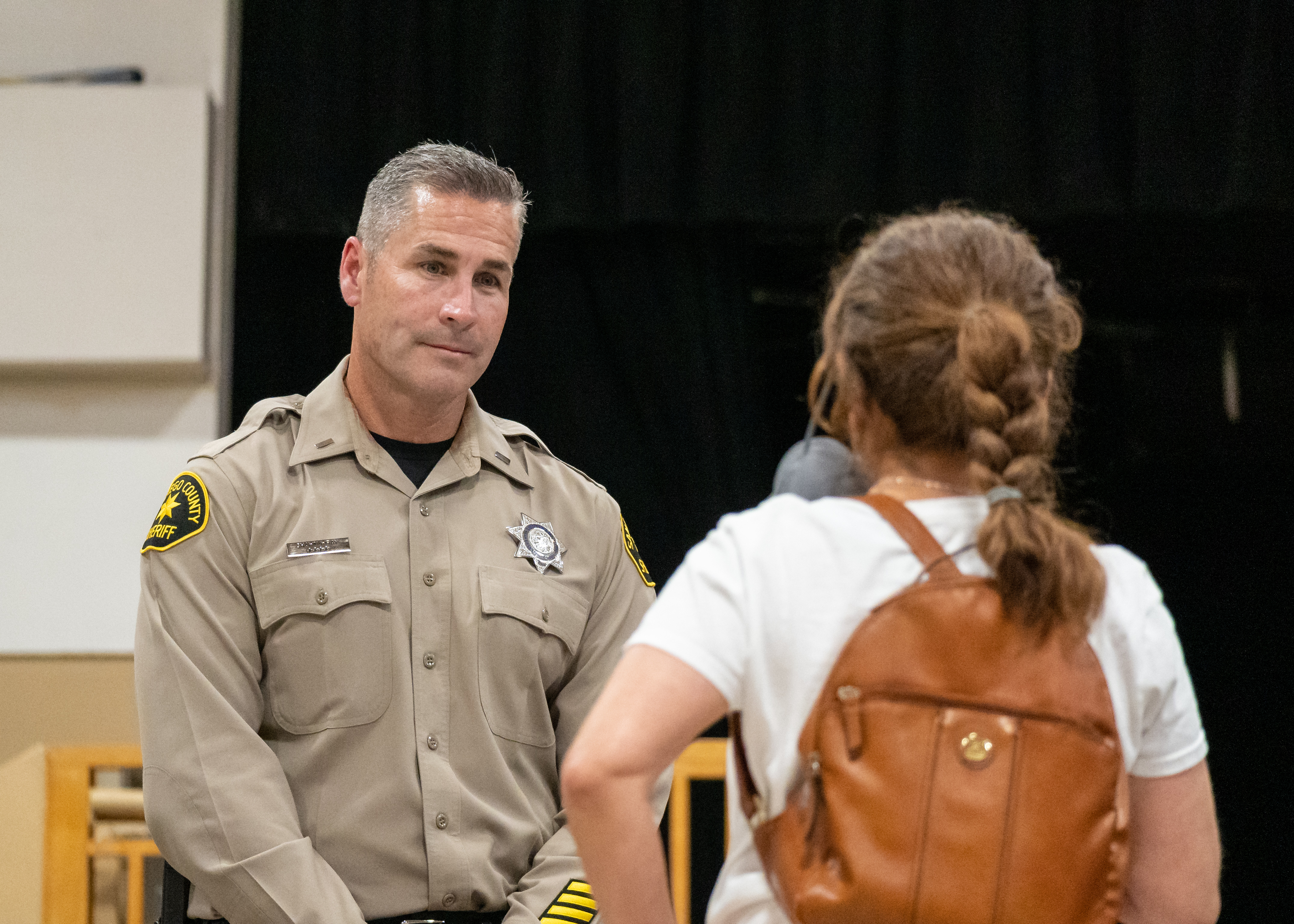
One attendee with the Black Panther Party asked, “why does it seem like in Lakeside, every time that charges are overlooked or minimized, it’s when harm is done to a black person?”
“The way it feels right now is that a black person can get hung in Lakeside, lynched on a tree, and there would be no accountability,” said the attendee.
“I certainly don’t think that’s the case,” said Wray.
“You grew up here. You know what happens here. It’s been happening my whole life,” interjected one frustrated attendee.
“Hearing these racist tones is very upsetting. No community wants to have any racial overtones. We’d like to get rid of those,” replied Wray.
One attendee shouted back that “it’s always been this way in Santee and Lakeside”
“We’re trying to change that,” responded Wray.
Williamson said there’s a culture of racism with Lakeside’s (and, more broadly, San Diego County’s) deputies. She referred to the 2020 incident in which San Diego Sheriff’s Deputy David Lovejoy pulled Shynita Phillips Abu out of her car after she started filming the deputy during a traffic stop. Loveyjoy pulled her so forcefully that he tore her braids from her scalp. The traffic stop was due to an alleged broken “third tail light.”
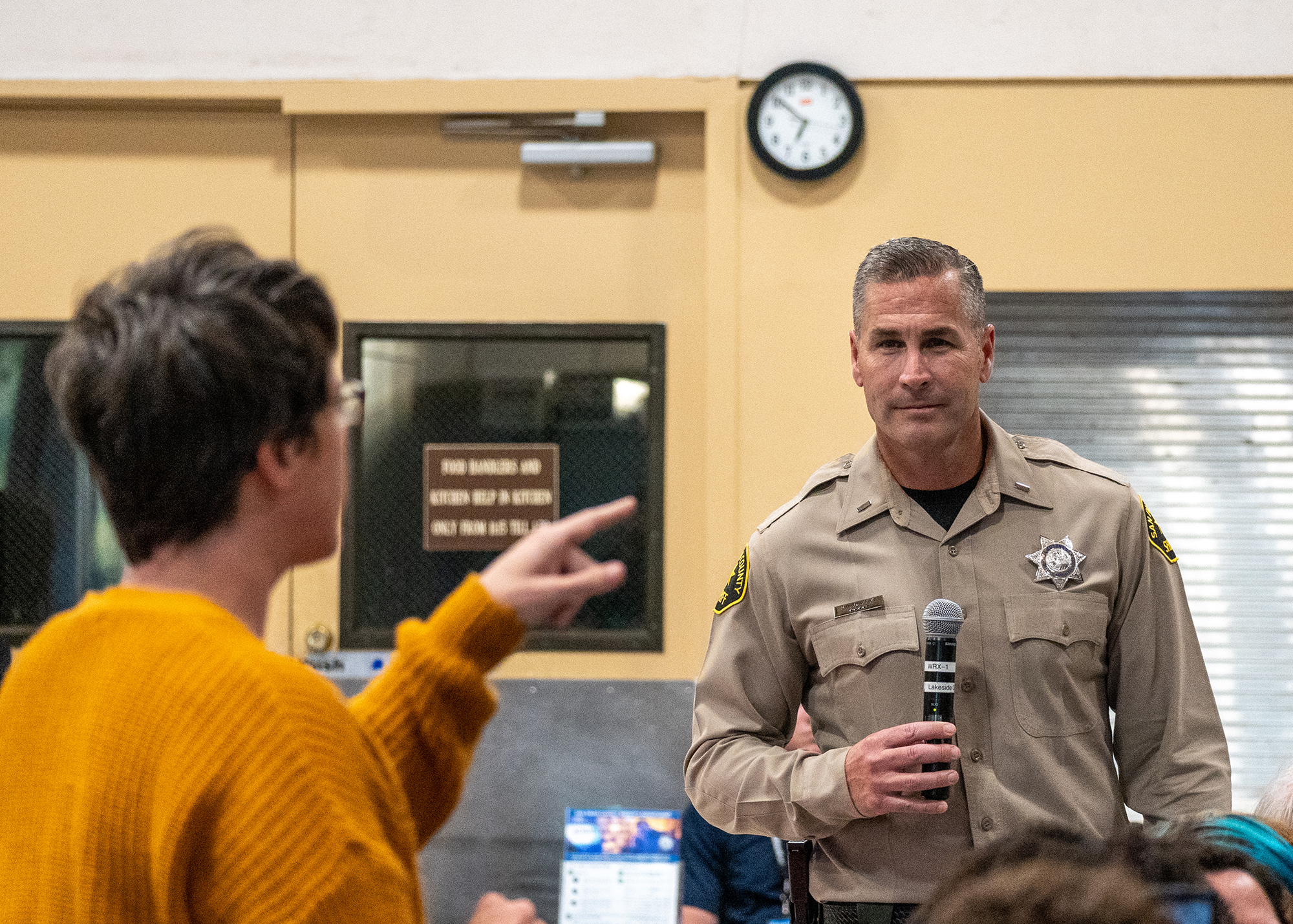
An attendee questioned the department’s strategy by asking “what are you actively doing to stop hate crimes and hate groups in this county?”
“I would actually like to put that back on you. If you hear things, and you see things, we would love to hear those items. You are the voice of the community, and I’d love to hear those,” Wray replied.
In response, the attendee highlighted the county’s history of white supremacists groups gathering and protesting in gear that identifies them as such, only to be met with gentle treatment and protection from law enforcement—even when members of hate groups are physically violent. The attendee argued that law enforcement has to know about these groups by now, and chooses not to disrupt their organizing efforts or investigate them.
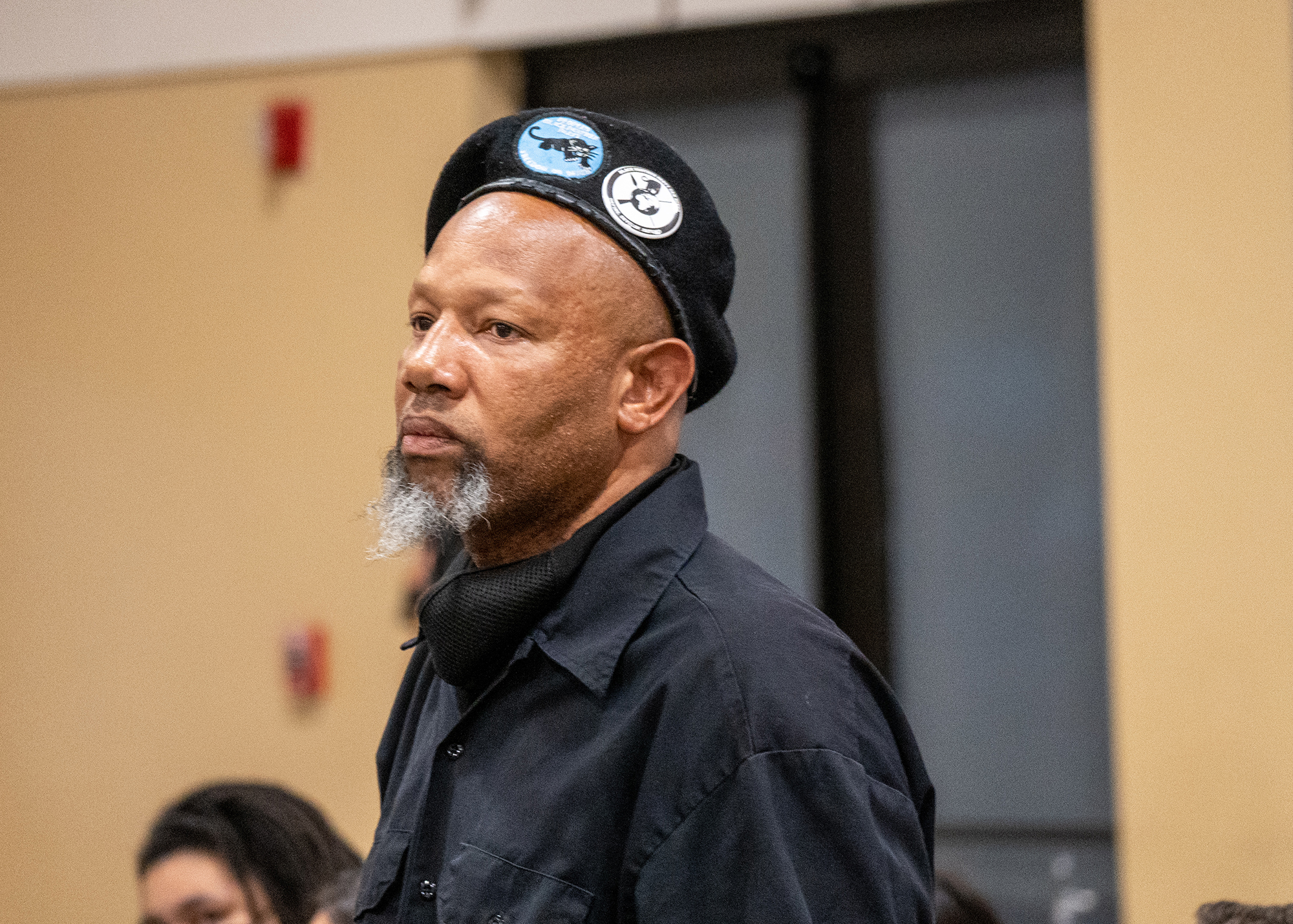
A member of the Black Panther Party of San Diego stated that “We’re gonna go out and start identifying these racist people, that are actually your brothers and cousins, and we’re going to flood your offices identifying that hate is actually taking place.”
“We encourage that information. I would also encourage you to please make sure that you don’t break any laws . . . let us collect that information is what I’m saying,” responded Wray.
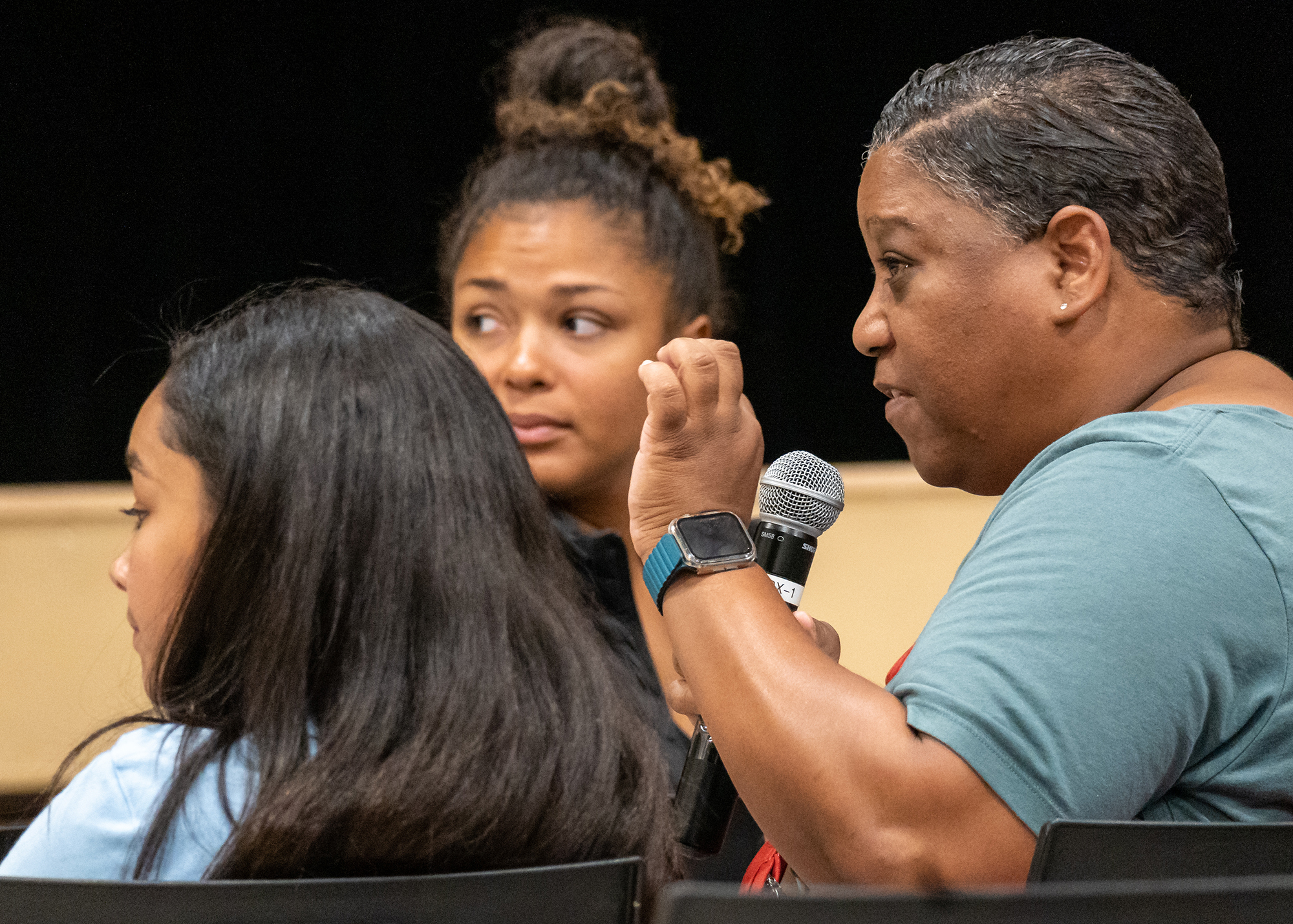
Toward the end of the panel, a deputy confronted attendees outside the community center. Tasha Williamson said the deputy was “being disrespectful to a family member of the victim.” According to Williamson’s account, the deputy spoke over the white driver of a motorcycle to antagonize a black a woman. Williamson and another attendee claim the deputy told the woman to shut the fuck up.
“These types of aggression that law enforcement do are also how things slip through the cracks when they patrol, report, and investigate,” said Williamson.
“There should be an investigation into the Lakeside substation, into bias, bias controlling,” Williamson said.
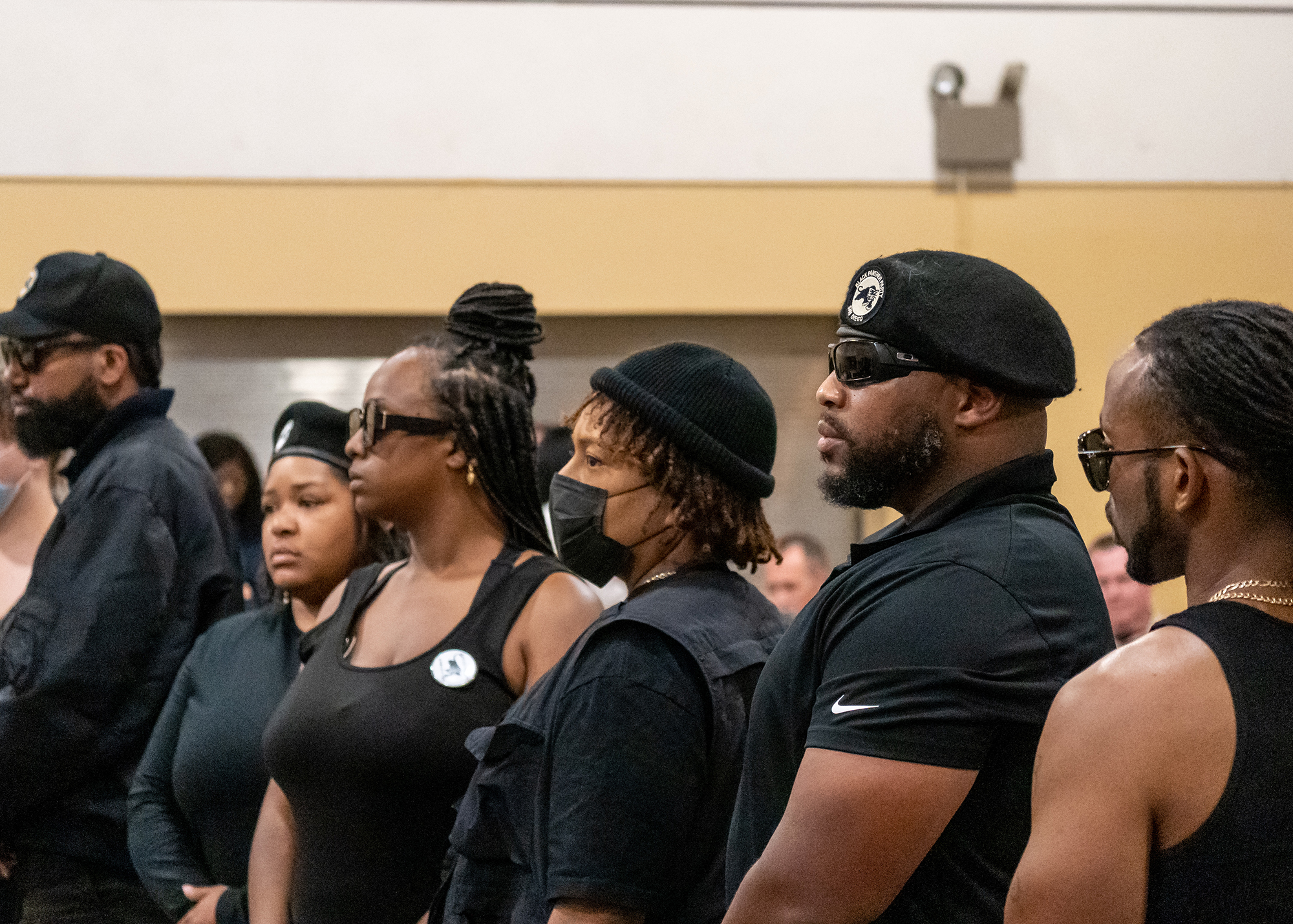
Williamson wasn’t the only attendee to bring up biased policing.
One man talked about how he’d seen people put up against the wall and searched under oppressive gang laws. He questioned whether the Sheriff’s Department was as restrained by law as LT Wray claimed.
One speaker pointed out that the assailant had “known ties” to a white supremacist gang.
“If there is a possible gang enhancement we’re looking at that as well,” said Wray. As mentioned above, the assailant is alleged to have connections to the Lakeside Gangsters.
“The family did not feel that there was urgency. The family did not feel safe,” Williamson said, adding that, “the family is worried that the father has not been arrested, even if it’s for child endangerment.” She detailed that the attacker’s father “walked over [to the victim] with his son and his son’s girlfriend” while the girlfriend had “a metal rod in her hand.”
That metal rod, according to the victim’s mother, was used to attack her as she tried to defend her daughter. Several attendees also spoke of their frustrations about the attacker’s girlfriend being released from custody and the D.A. ’s unwillingness to charge the attacker’s father.
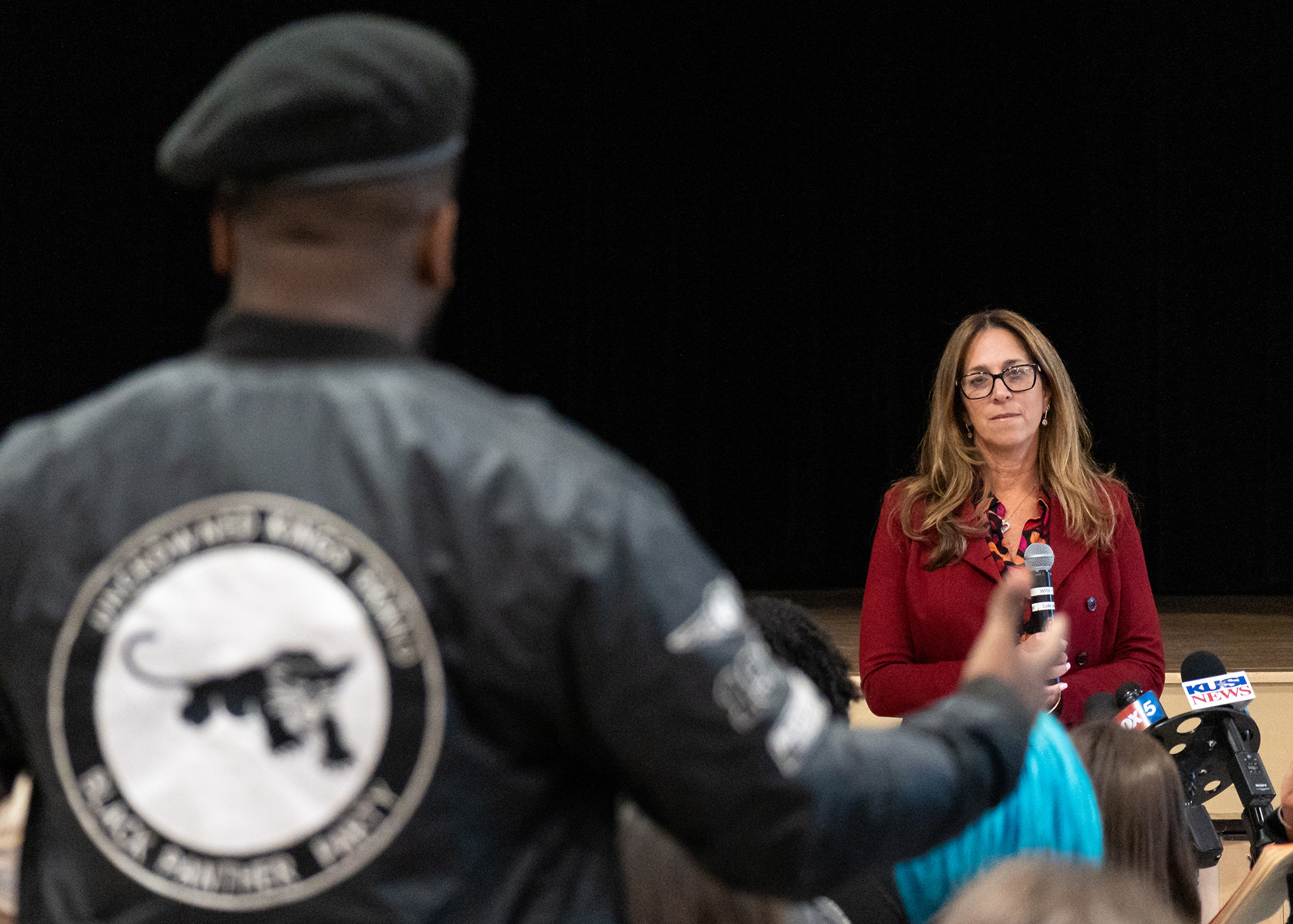
Lisa Weinreb, chief of the Juvenile Branch for the San Diego District Attorney’s Office, was asked why the father of the assailant had not been arrested.
“What I can say is, unless an adult is committing a crime, we can’t prosecute them for a crime,” she replied, “While it is horrific, horrific behavior, I can’t prosecute a parent for standing by. If that were a crime, we would certainly look for that.”
Weinreb clarified that “unfortunately we are dictated by the law, and the law doesn’t allow—somebody who is standing as a bystander and did nothing more—then that is not a crime.”
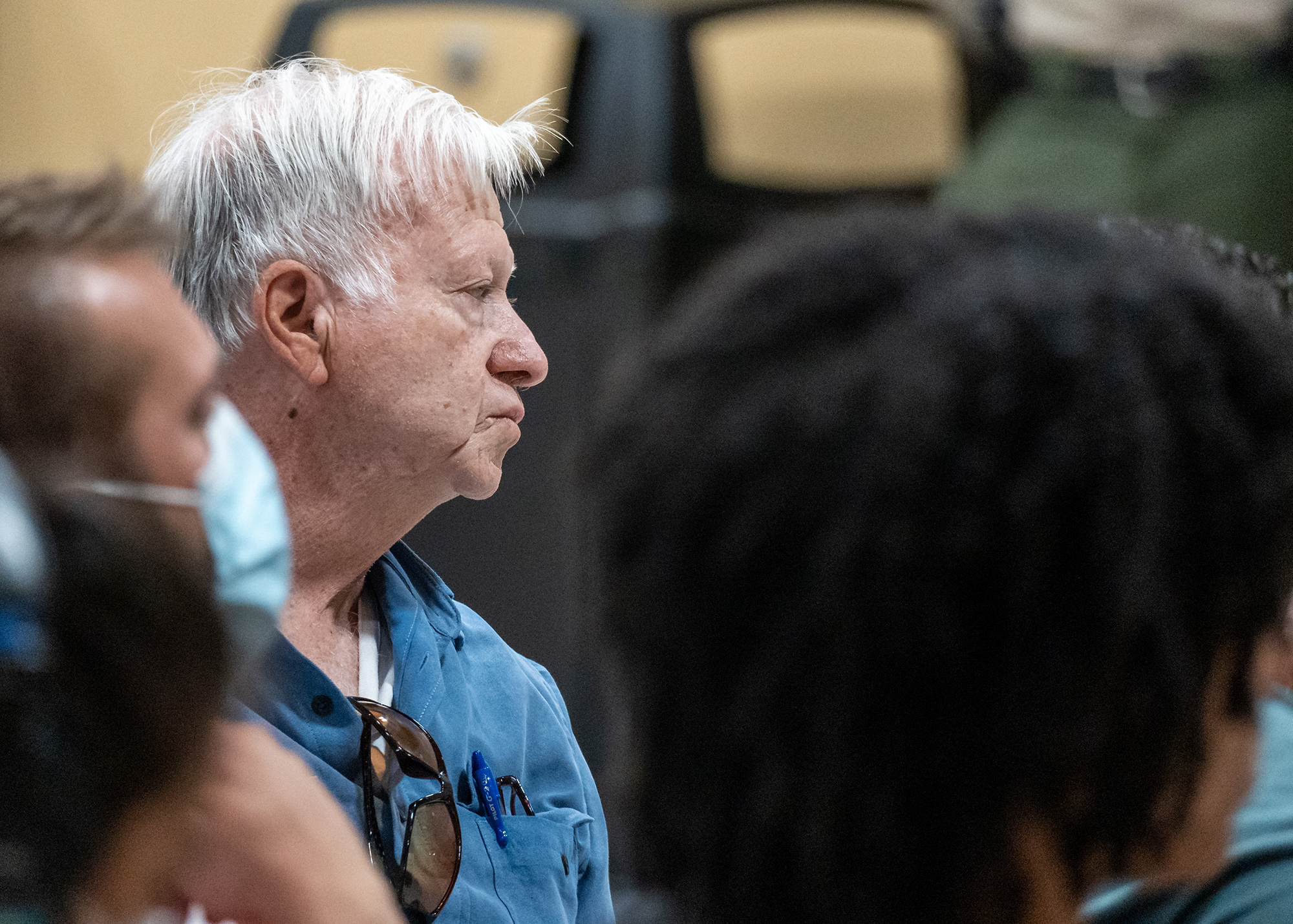
“There has to be an overt act of furtherance . . . merely being present is not enough. The detectives assigned to this case will take that all into account and put that forward in the investigation,” responded Wray. Detective Rolland Garza, who is in charge of this investigation and attended the town hall, did not speak during the event.
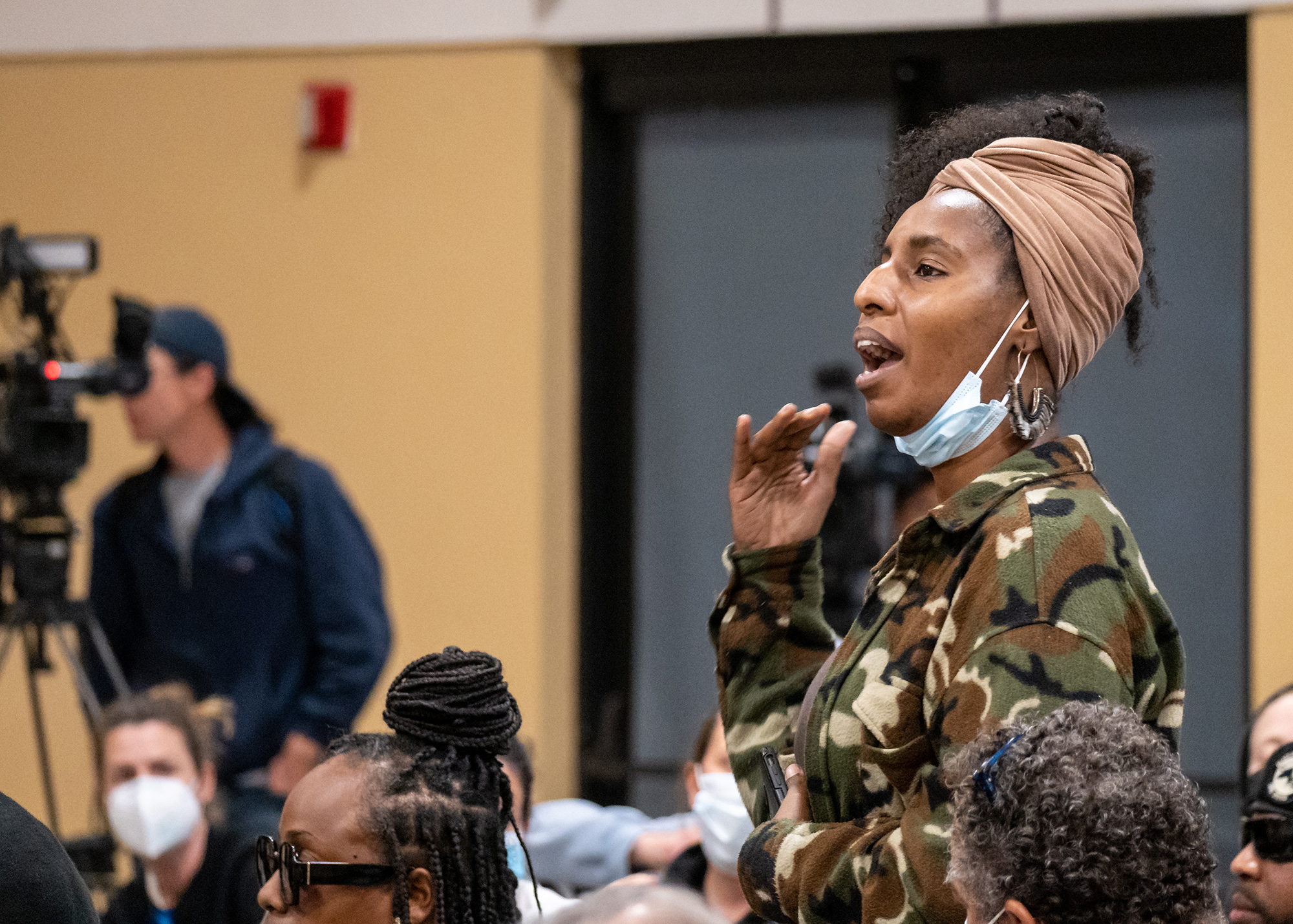
“It’s Tuesday. This happened Saturday. You said you took witness statements. Those statements said exactly what people are saying today. That is what he should be arrested for—aiding and abetting, walking with his son, watching it happen,” another speaker said, audibly frustrated.
“For you, and all of you officials that say that this is not a crime, you’re two-sided. You’re two-faced,” she said.
“We have to get those statements, and then we have to write those out. And then we present that case,” responded Lt. Wray. He specified that at the time of trial, “the DA has to have much of the case written, but sometimes it takes time to get the reports written out and all the evidence.”
“And the dad’s still out,” shouted back one attendee.
“And the girlfriend!” shouted another.
As the conference was wrapping up, one attendee shouted their frustrations at Wray: “You’re setting a dangerous precedent if you don’t investigate the father . . . you’re going to open up more Kyle Rittenhouses, more of this kid!”
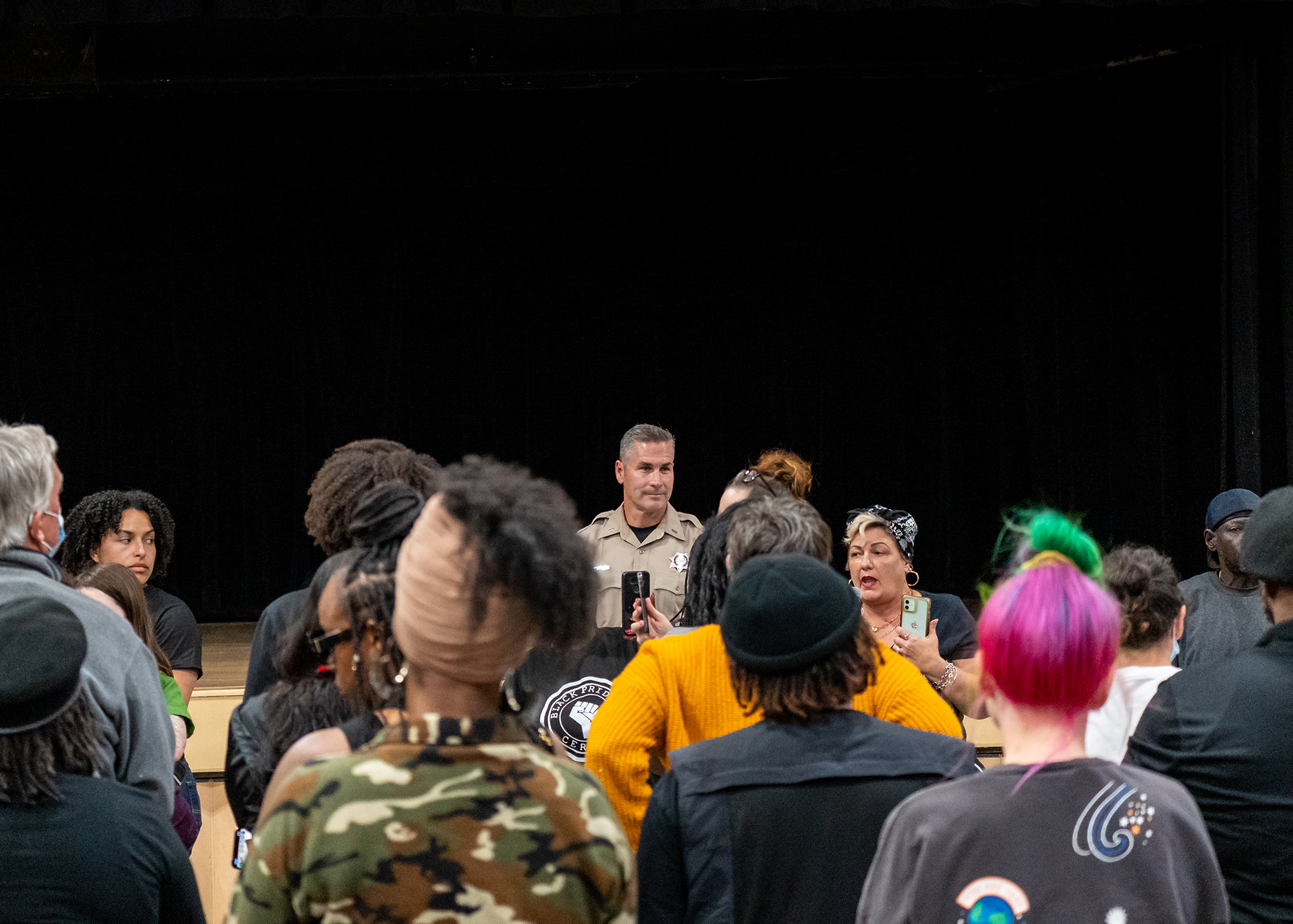
“Last time I was here I was called the n-word,” said one audibly frustrated attendee. “Just walking in right now, two people tried to run me off the road. I’m seeing how you’re taking this right now, and I kind of feel like you’re taking it with a grain of salt.”
“We’re all feeling the same thing. There is a major disconnect from the lifetime of trauma that most of us have felt–by living in this community and surrounding communities–and the culture of the Sheriff’s Department or the Police Department,” said one exasperated attendee. “Because we know that [law enforcement] is a major place where a lot of the hate crimes or hate speech–whatever you want to call it–we know that there’s a culture of that.”
The area’s problems with not just systemic racism but organized hatred go back decades. KPBS published a special report on Lakeside’s “Culture of Hate” following the 1999 murder of a Mexican migrant worker. In 2020, a racial justice group called Caravan for Justice SD drove through Lakeside. They were met with opposition from residents, the San Diego Tribune wrote, “such as a man decked out in a Defend East County hat and white T-shirt said he viewed Black Lives Matter supporters as a domestic terrorist group that is waging a civil war.“ Longtime resident E.A. Barrera wrote about their experiences in the city. When a black Navy family attempted to move into an apartment in Lakeside, “Groups of white people gathered outside as they moved in - and the next morning graffiti was sprayed on the building saying ‘no [n-words] and a swastika drawn,” wrote Barrera.
It was clear that the attack was nothing new for Lakeside residents.
“If you’ve experienced racism in Lakeside, please stand up,” one attendee requested. requested. Most of the room stood up.
“Anyone who has had something done about it by the police can sit down,” she said.
Almost all remained standing.
If you would like to support the victim of this hate crime, you can do so by donating to the fundraiser here.